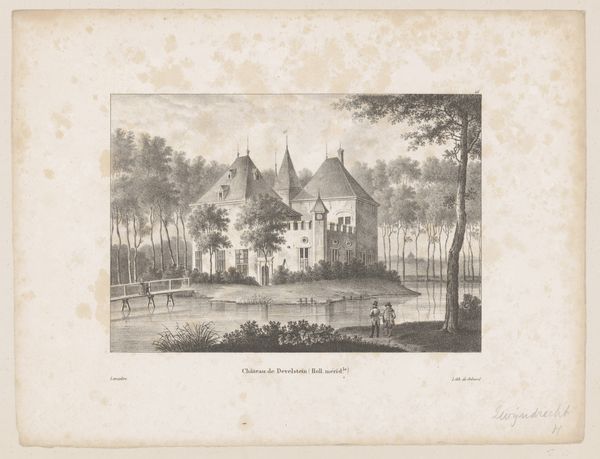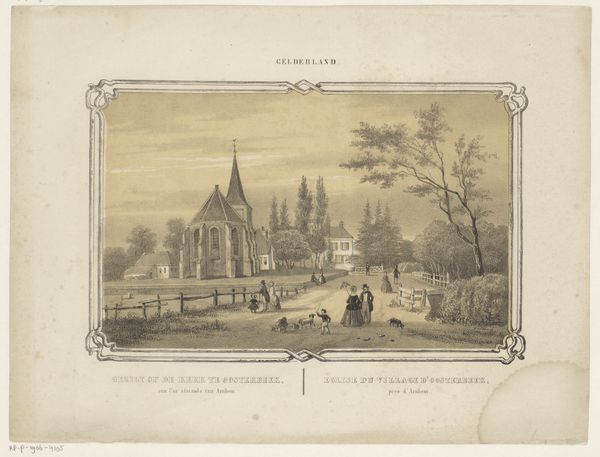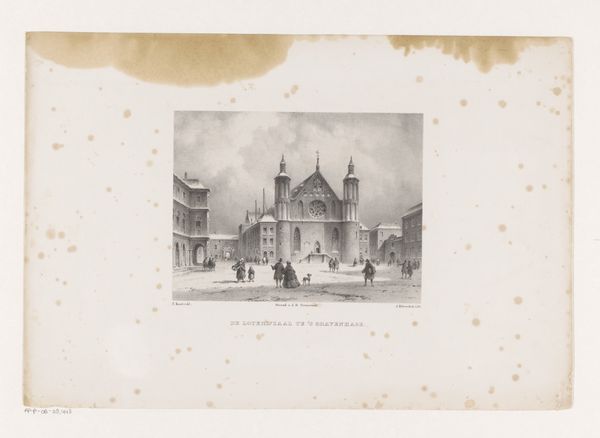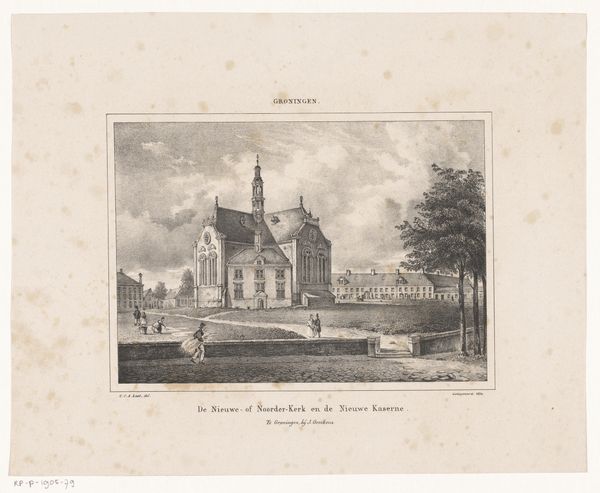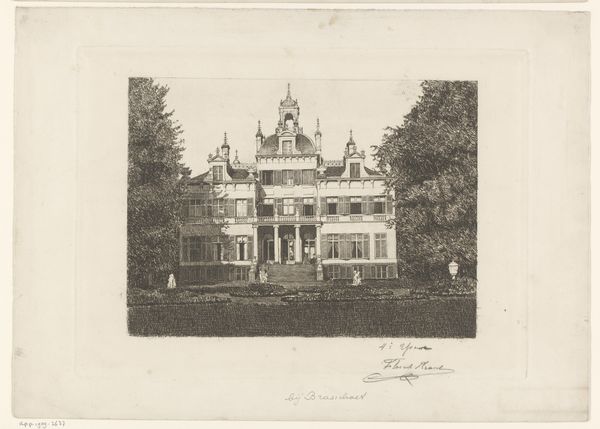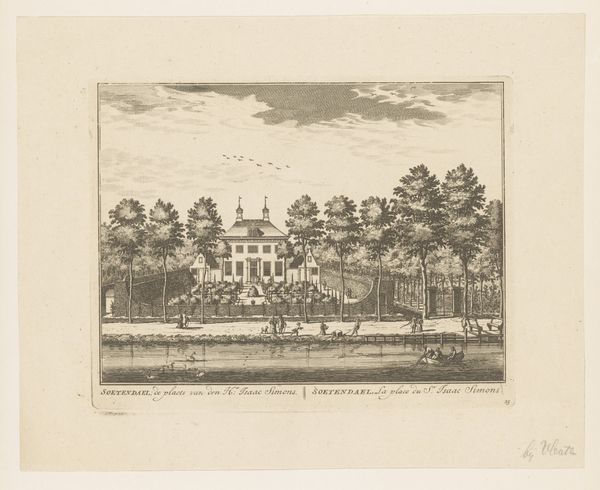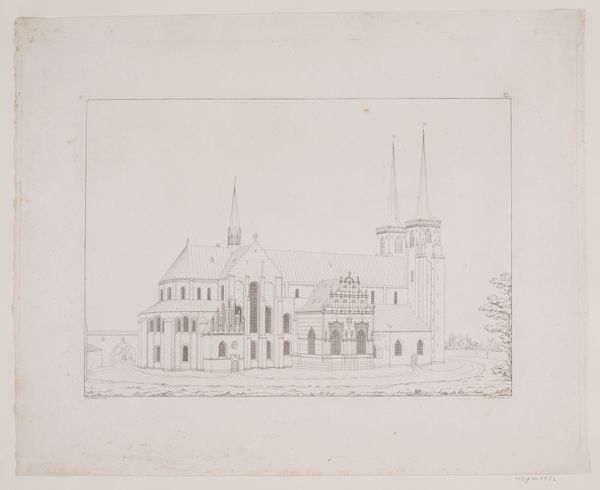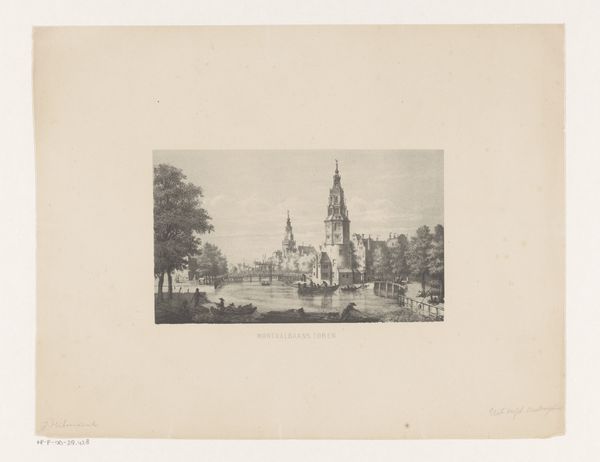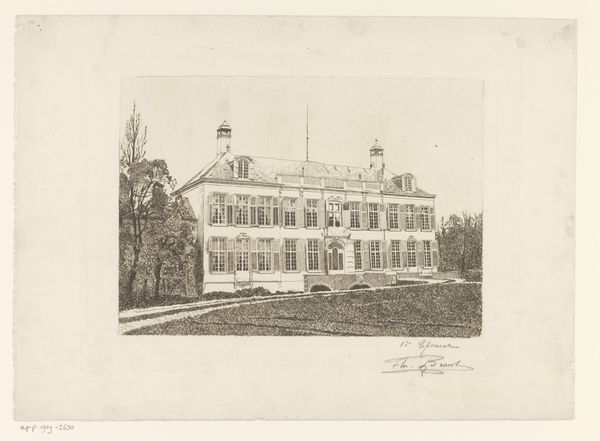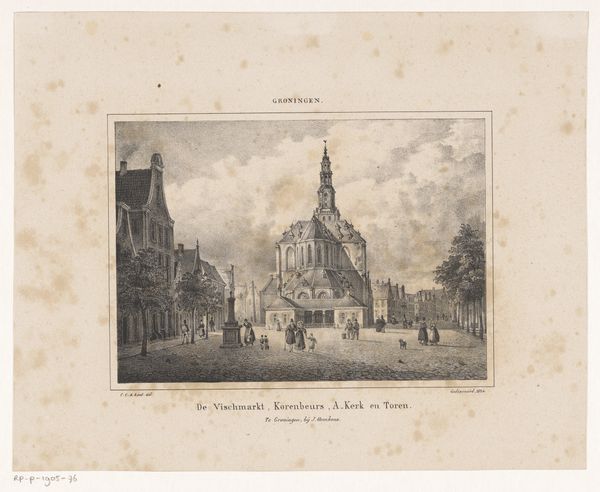
drawing, lithograph, print, paper
#
drawing
#
neoclacissism
#
aged paper
#
toned paper
#
light pencil work
#
lithograph
# print
#
landscape
#
paper
#
cityscape
Dimensions: 245 × 343 mm (image); 399 × 568 mm (sheet)
Copyright: Public Domain
Curator: This is a lithograph, with some pencil work, titled "Church of the Grand Palace, Petrodvorets." Created around 1820 by C. Schultz, it is a delightful city scene that is now housed here at The Art Institute of Chicago. Editor: It gives the impression of looking at something fragile, like a memory almost faded, that muted tone. Curator: The landscape is quite characteristic of neoclassicism. Look how the building anchors the composition—it is set against what appears to be aged or toned paper to give it that washed aesthetic. Editor: Right, there is this perfect balance between light and shadow that underscores a deeper symbolic meaning. That church with its domes; they seem almost yearning, heavenward striving? Curator: Yes, that upward thrust definitely captures that reach for the divine, which echoes the anxieties of a Europe undergoing significant change and yearning for a return to stable cultural iconography. The buildings, so meticulously depicted, showcase imperial authority, the spiritual power deeply embedded in this specific church. The imperial court regularly attended services there. Editor: I note the figures around the square as well. Their positioning enhances the staged impression: horses, couples promenading. What's curious to me is how their dress mirrors, but miniaturizes, the building’s ornamentation and emphasis on detail. Curator: These architectural structures often mirrored imperial ambitions for permanence and divinity; what is also important, the setting reflects how rulers wanted to be seen. Here, in the presence of their faith, in a way that legitimizes that divine right. The buildings almost stand as representations of these cultural memories of old power, reinforced through repeated visual affirmations. Editor: So, more than simply an architectural rendering, this lithograph works as a complex tapestry of power, faith, and cultural memory. Fascinating how visual strategies build deeper meaning. Curator: Indeed. Every structural element plays its symbolic role within the wider sociopolitical context. Editor: Viewing it again now, that initial impression of fading only strengthens into one of the endurance of symbols, power encoded over centuries.
Comments
No comments
Be the first to comment and join the conversation on the ultimate creative platform.
